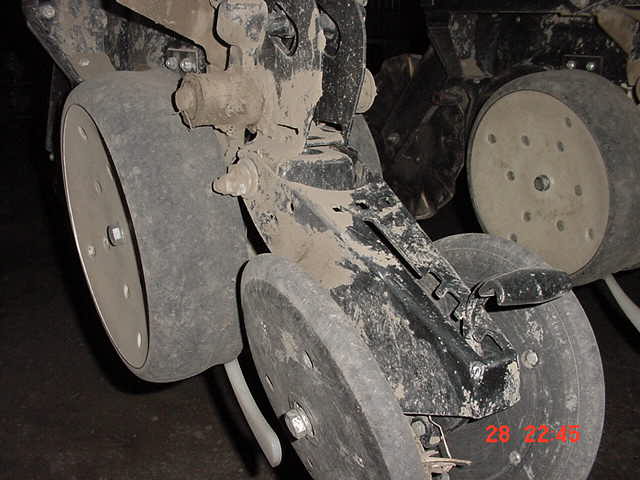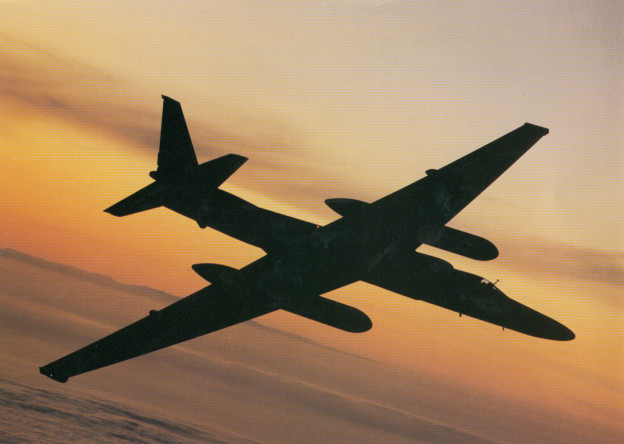 You won’t read this until September but I’m writing it in the second week of May with planting season in full swing. It is spawned by an email I received from a fellow author wishing me luck with the seeding. This reminded me just how far away from agriculture the bulk of our society has gotten.
You won’t read this until September but I’m writing it in the second week of May with planting season in full swing. It is spawned by an email I received from a fellow author wishing me luck with the seeding. This reminded me just how far away from agriculture the bulk of our society has gotten.
In the image above, especially near the top, you can see the rows made in the dirt by a planter. If you look really closely at the image or perhaps use some zoom feature, you can see little green corn stalks poking through the ground. After another shower or a few more days you will be able to “row it.” That means as you are driving past you can look out and to definitively know there are rows.
Planting is the act of inserting into the soil in organized rows that which you wish to grow.

In the image above you see and old fashioned drill. I say old fashioned, but, many of these are still in use today. Note there are two boxes. One really big one in the back and a small skinny box mounted on the front of the big box. The “drill” portion of this drill meters seed down from the big box to be planted in very narrow (usually 7″) rows.
The seeder attachment on the front allows metered amounts of seed to fall down those skinny tubes, usually to a flared end where it is distributed on top of the ground. Whenever you hear a farmer talk about “seeding a waterway” they are generally using the seeder attachment on the front of such a drill.
Seeding is the act of broadcasting seed on top of the ground where it may or many not be worked in later.
The types of things which are “seeded” generally don’t need a protective cover of soil to germinate. Many grasses fall into this category as do many vine growing melons. There was a time during my childhood where a form of gardening called “The Wichard Method” (possibly Whichard) was popular. Some didn’t even bother to till the ground first, just walked out and cast seed around like they were feeding chickens. Later in the year they went to see what grew. As one might imagine, casting seed on untilled ground didn’t have a high yield. Especially if you had a lot of birds and rodents around.
Still, large scale seeding of untilled ground does happen today in the realm of cover crops. These are “little crops” planted on a field after the cash crop has been harvested to help hold soil in place, provide nutrients, pasture livestock, etc. Most cover crops aren’t allowed to mature. They are killed off when it is time to plant the real cash crop.
When one hears the phrase “air seeding” it conjures up images of crop dusting planes with clouds flowing out behind them flying close to the ground. While that still happens from time to time, more often than not they are talking about some monstrous piece of equipment like the image below.
And the tractor pulling it may consume up to 100 gallon per hour of diesel fuel. Your “organically grown” lifestyle is very “big oil” friendly.
By the way,
That’s not seeding, it is spraying. Nobody seeds into a green crop. You seed into an about to be or recently has been harvested crop.
Don’t just see a big central hopper and assume it is a seeder. Many of today’s planters use a central hopper and air to transfer the seed to the planter unit itself.
A no-till planter typically has an opening coulter blade in front of the disk openers. I haven’t seen a no-till drill up close recently, but expect it is the same.

Everything behind the coulter blade is generally the same between no-till and standard planters. Disk opener blades placed between depth gauge wheels, some form of little covering/sweeping thing, then packing wheels to ensure the tiny furrow the disk openers created is closed with soil covering the seed.
Disk openers – 2 round disk blades placed at a V angle so their most forward edges run together but the rear are quite some distance apart. We call it a V but image wise it is really more of a less than sign <.

Remember, planting requires you bury the item (seed, onion set, potato eye, whatever) in organized rows. Seeding is casting. During my youth most farmers had a tiny drill like the image earlier in this post. If they needed to seed something big, they would go rent a fertilizer buggy.
Just pay attention to those 2 round disks at the bottom right of the image. Those spin at some speed and the upright fins cast whatever lands on the spinning disk quite widely. If you’ve ever been behind a salt truck on an Interstate, you’ve witnessed this technology up close and personal like.
Salt trucks tend to limit the spray to a width of 1-2 lanes while a fertilizer spreader tries to cover 50 feet on each size, but, the technology is the same.
Note: The picture at the top was taken of the corn field around lunch time on Monday, May 7, 2018. The picture below was taken shortly after 6pm on the same day. Hopefully you can expand that to full size so you can actually understand what I mean by “row it.”

Note 2: Yesterday my cameras could not capture what they eye could see. Even this morning, 5/9/2018, they didn’t quite do it justice, but, you should be able to understand what people mean when they ask “can ya row it yet?”









